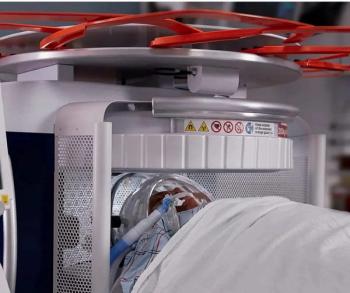
Report from ARRS: Study establishes infection as NSF risk factor
New evidence has surfaced pinpointing specific potential causes of nephrogenic systemic fibrosis. Findings sustain its relationship to some gadolinium-based contrast media, but they also suggest that infection, certain patient demographics, and even some drugs could be strongly associated with the condition.
New evidence has surfaced pinpointing specific potential causes of nephrogenic systemic fibrosis. Findings sustain its relationship to some gadolinium-based contrast media, but they also suggest that infection, certain patient demographics, and even some drugs could be strongly associated with the condition.
The studies were released Monday at the 2008 American Roentgen Ray Society meeting in Washington, DC.
Researchers from Duke University led by Dr. Lauren Golding reported strong evidence that patients with renal insufficiency who had sustained infections from surgery or inflammatory conditions previous to MR scanning are more likely than other high-risk patients to develop NSF. The association of NSF with infection was highly significant (p<0.001). It was established from retrospective reviewed data from eight patients who developed NSF at Duke between 2002 and 2006.
In another study, Dr. Bobby Bryant and colleagues at Loma Linda University Medical Center in California prospectively enrolled 154 consecutive patients with stage III chronic kidney disease who had undergone MRI with gadobenate dimeglumine from January 2007 to January 2008. The researchers gave patients verbal and written information about NSF and asked them to contact their radiologists and primary care physicians if they developed symptoms.
None of the patients with chronic moderate renal insufficiency who completed a three-month follow-up after gadolinium-enhanced MRI developed the condition.
The investigators contacted 130 patients at three months and 69 at six months. The rest were lost to follow-up. Nine patients developed skin rashes not related to NSF and required no confirmatory skin biopsy. No other signs and symptoms of NSF were reported by the remaining patients on follow-up. The mean contrast agent dose used was 0.095 mmol/kg (range 0.052 to 0.132). Mean estimated creatinine level in this patient group was 50.5 mL/min (range 30 to 59).
"The likelihood of NSF development in patients exposed to gadolinium-based contrast media appears to be greater in patients with end-stage renal disease and acute renal failure," Bryant said. "This is the first study to directly follow up patients with moderate renal insufficiency exposed to gadobenate dimeglumine."
Results could have potential implications for clinical practice. Nearly one in 10 patients between the ages of 60 and 69 with renal insufficiencies reach stage III status, as do about a quarter of patients 70 and older. Screening for kidney disease in these patients populations could increase managing costs. Further studies are needed to establish a link between stage III kidney disease, gadolinium-based contrast media, and NSF, Bryant said.
In a third study, Dr. Steven Sauk and colleagues at the University of California, Los Angeles retrospectively reviewed the records of 10 biopsy-proven cases of NSF found at their institution during the last decade (1997 to 2007). They matched these patients' data with that of 10 dialysis-dependent control subjects of similar age and gender who underwent gadolinium-based MRI studies during the same period.
The investigators found that 70% of NSF patients received erythropoietin and immunosuppressive therapy at the time of NSF. They also found that all NSF cases were dialysis-dependent patients. This finding supports the belief that patients with severe renal impairment are more likely to develop the condition.
For more information from the Diagnostic Imaging archives:
Newsletter
Stay at the forefront of radiology with the Diagnostic Imaging newsletter, delivering the latest news, clinical insights, and imaging advancements for today’s radiologists.

























